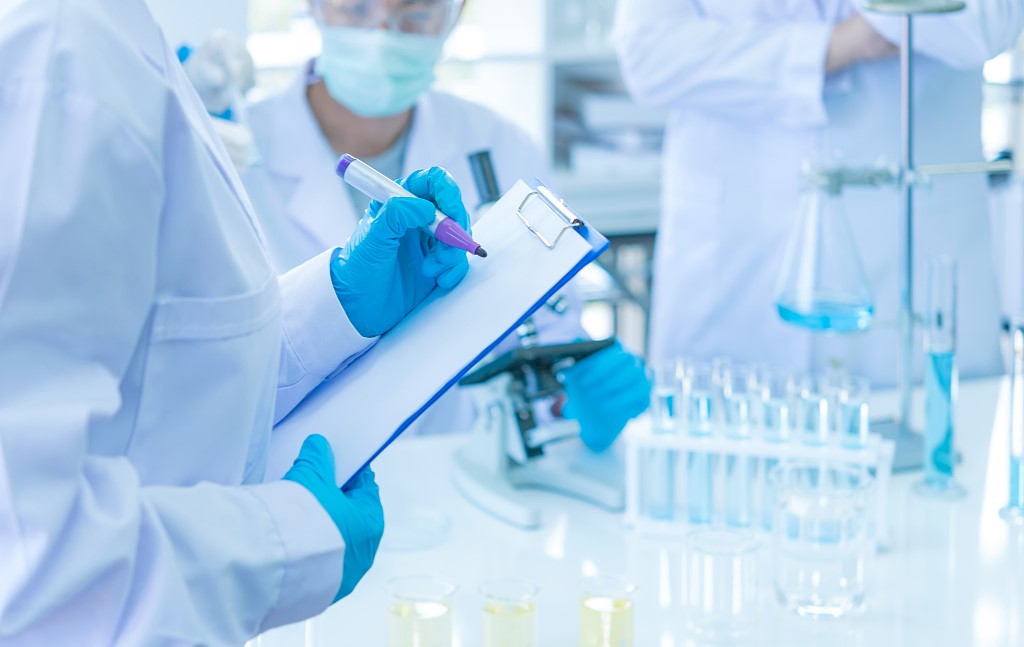扫一扫 添加小助手
服务热线
13818320332
扫一扫 关注我们
 11月11日,世界卫生组织(WHO)发布了“研究和开发设施的良好实践” 指南(Good practices for research and development facilities)的征求意见稿。WHO指出,就开发批、中试批生产以及相应的稳定性数据,目前没有相关的法规指南对稳定性、工艺验证和分析方法的开发和验证提出具体要求,因此开发本文件非常有必要。本文件为研发机构提供了有关GMP方面的指南,目的是确保遵循正确的系统,保证产品、工艺、程序和数据的适当性、可靠性和质量。
11月11日,世界卫生组织(WHO)发布了“研究和开发设施的良好实践” 指南(Good practices for research and development facilities)的征求意见稿。WHO指出,就开发批、中试批生产以及相应的稳定性数据,目前没有相关的法规指南对稳定性、工艺验证和分析方法的开发和验证提出具体要求,因此开发本文件非常有必要。本文件为研发机构提供了有关GMP方面的指南,目的是确保遵循正确的系统,保证产品、工艺、程序和数据的适当性、可靠性和质量。
该文件目前正处于收集意见期,截止日期为2021年1月。此后,将于2021年2-3月份提交专家工作组,进行讨论,完善后进行第2轮意见收集。最终修订稿计划于2021年10月份,提交第56药物制剂专家委员会(ECSPP)批准。
本指南主体部分分为22个章节,内容如下:
1.背景
2.简介
3.范围
4.质量管理
5.质量风险管理
6.卫生
7.确认与验证
8.外包活动
9.自检和质量审计
10.人员
11.培训
12.设施
13.设备和仪器
14.物料
15.文档
16.加工和工艺验证
17.质量控制
18.稳定性研究
19.分析程序的制定
20.技术转移
21.生命周期方法
22.清洁程序的开发和清洁验证
以下是该指南的背景、简介和范围方面的内容:
1. Background 背景
In view of the recent need for the unprecedented fast development of health products for the treatment of COVID-19 therapies, the World Health Organization (WHO) Prequalification Inspection Services Team (PQT INS) raised the urgency for the development of good manufacturing practice (GMP) text to address the manufacturing of developmental batches, pilot batches and the sequential stability data that is submitted in product applications (dossiers) for marketing authorization and the prequalification of medical products.
鉴于最近迫切需要快速开发用于新冠治疗的健康产品,WHO资格预审检查小组(PQT INS)提出了开发GMP文件的紧迫性,以指导开发批、中试批生产以及相应的稳定性数据,这些信息是在产品申请(申报资料)中提交,用于上市许可和医疗产品资格预审。
There are currently no regulatory guidelines which address this matter, although the data collected from these batches influence the following aspects of the product:
stability;
process validation; and
analytical method development and validation.
尽管从这些批次中收集的数据会影响产品的以下几个方面,但是目前没有解决这些问题的法规指南:
•稳定性;
•工艺验证;
•分析方法的开发和验证。
2. Introduction 简介
2.1. The modern era of the pharmaceutical industry, in particular focusing on chemical synthesis, began in the 19th century. The use of computerized systems in production and control is increasing rapidly. The ongoing evolution and advancement in the pharmaceutical industry is fundamental in the control and elimination of disease around the world.
制药业的现代化始于19世纪,主要专注于化学合成药物。在生产和控制中,计算机系统的使用正在迅速增加。制药行业的不断发展和进步,对于控制和消除全球疾病至关重要。
2.2. With an ever increasing awareness of the risks in pharmaceutical production and control, and the life cycle approaches being followed, more and more emphasis is being placed on ensuring that the research and development of products are appropriately controlled and documented.
随着人们对药品生产和控制风险的认识不断提高,并且遵循了生命周期方法,越来越多的重点聚焦于:对产品的研究和开发,确保进行适当的控制和记录。
2.3. Furthermore, as regulators request and review data and information such as the development data of products and processes, design of experiments, validation and stability results, it has become necessary to ensure that the facilities, quality systems, data and information meet the appropriate standards and good practices.
此外,随着监管机构对数据和信息的索要和审查,例如产品和工艺的开发数据、实验设计、验证和稳定性结果,有必要确保设施、质量体系、数据和信息符合适当的标准和良好实践。
2.4. This document intends to provide guidance on GMP to research and development facilities. It further aims to ensure that the correct systems are followed, ensuring appropriateness, reliability and the quality of products, processes, procedures and data. It further helps to help ensure that products meet the requirements for safety, efficacy and quality that they purport to possess.
本文档旨在为研发机构提供有关GMP的指南。它还旨在确保遵循正确的系统,确保产品、工艺、程序和数据的适当性、可靠性和质量。进一步有助于确保产品满足声称具有的安全性、功效和质量要求。
2.5. In addition to product development, other activities including the production of investigational products and pilot scale batches; process validation; cleaning procedure development; cleaning validation studies; as well as stability studies, are often undertaken in such facilities.
除产品开发外,其他活动包括试验用产品和中试批的生产;工艺验证;清洁程序的开发;清洁验证研究;以及稳定性研究,通常都是在此类设施中进行的。
2.6. The WHO document titled Good manufacturing practices for investigational pharmaceutical products for clinical trials in humans (1) specifically addresses the requirements and recommendations for products used in clinical trials. Other WHO guidelines address specific requirements and recommendations including but not limited to stability testing, analytical method validation, cleaning validation and the transfer of technology (TOT). (See the References and Further Reading sections).
WHO题为“试验用药品的GMP”的文件专门针对临床试验中使用的产品提出了要求和建议。世卫组织的其他指南还针对具体要求和建议,包括但不限于稳定性测试、分析方法验证、清洁验证和技术转移(TOT)。
3. Scope 范围
3.1. This guideline is applicable to research and development facilities of products manufactured by chemical synthesis, extraction, cell culture or fermentation, by recovery from natural sources, or by any combination of these processes. It further covers development of procedures and processes intended for transfer and use in marketing authorization applications, process validation, TOT (10)-related activities, validation (7), quality control laboratory activities (11), such as stability testing and development, and validation of cleaning procedures (see Figure 1 and section 4 below).
本指南适用于研发设施,其通过化学合成、提取、细胞培养或发酵、天然来源回收或通过这些工艺的任何组合来生产产品。它进一步涵盖程序和流程的开发,涉及转移和用于上市许可申请、工艺验证、TOT相关的活动、验证、QC实验室活动(例如稳定性检验和开发),以及清洁程序的验证(请参见下面的图1和第4章)。
3.2. This guide excludes all vaccines, whole cells, whole blood and plasma, blood and plasma derivatives (plasma fractionation), medical gases, commercial products, radiopharmaceuticals and gene therapy products.
本指南不包括所有疫苗、全细胞、全血和血浆,血液和血浆衍生物(血浆分级分离)、医用气体、商业产品、放射性药物和基因治疗产品。
3.3. The good practices outlined below are to be considered general guides and they may be adapted to meet individual needs. The equivalence of alternative approaches, however, should be proven.
以下概述的良好实践应被视为通用指南,可以对其进行调整以满足特别需求。但是,应证明替代方法的等效性。
3.4. In this guide, the term “should” indicates recommendations that are expected to apply unless shown to be inapplicable or replaced by an alternative demonstrated to provide an acceptable level of control.
本指南中,术语“应该”表示预期将适用的建议,除非显示为不适用,或被证明可以使用替代方案替代(需提供可接受的控制水平)。
3.5. This guide, as a whole, does not cover safety aspects for the personnel engaged in the research and development nor the aspects of protection of the environment. These controls are inherent responsibilities of the manufacturer and are governed by national laws.
总体而言,本指南未涵盖从事研发的人员的安全方面,也未涵盖环境保护的方面。这些控制是生产商的固有责任,并受国家法律约束。
3.6. This guide is not intended to define registration requirements or modify pharmacopoeial requirements or other guideline recommendations. For details on process development, it is recommended that other guidelines, such as those published by The International Council for Harmonisation of Technical Requirements for Pharmaceuticals for Human Use (ICH), be read in conjunction with this document.
本指南无意定义注册要求,或修改药典要求,或其他指南建议。有关工艺开发的详细信息,建议与本文档一起阅读其他指南,例如ICH出版的相关指南。
3.7. This guide does not affect the ability of the responsible regulatory agency to establish specific registration or filing requirements. All commitments in registration and filing documents must be met. This document provides information to consider for a risk- and science-based approach in the research and development of medical products.
本指南不影响负责的监管机构建立特定注册或备案要求的能力。必须遵守注册和提交文件中的所有承诺。本文档提供了:在医疗产品研发中,考虑基于风险和科学的方法的信息。
3.8. The main focus of the document is on pharmaceutical formulation and development. The principles described in this document may however be applied in facilities where other products such as vaccines, veterinary products and biopharmaceutical products are developed. The principles may also be considered, where appropriate, in facilities where medical devices are manufactured.
该文件的主要重点是药物制剂和开发。但是,本文档中描述的原理可能适用于开发其他产品(如疫苗、兽药和生物制品)的设施。在适当的情况下,也可以在生产医疗器械的设施中考虑这些原则。
3.9. Due to the nature of research work, and an increasing expectation for compliance with standards in manufacture, the guidance in this document would normally be applied based on risk assessment, in an increasing manner, from research to commercial batch manufacturing. The stringency of GMP in research and development should increase as the process proceeds from early research work to the final steps of development and formulation, stability testing, process validation and cleaning validation.
由于研究工作的性质、以及对生产标准合规性的期望越来越高,因此通常基于风险评估,随着从研究到商业批生产这一过程的推进,本指南中的内容越来越多地应用。随着从早期研究工作到最终步骤的过程,如开发与配方、稳定性测试、工艺验证和清洁验证,GMP在研究和开发中的严格性应逐渐增加。
Figure 1. Application of this guide
Early research – Research – Development/formulation – Registration batches
Increased compliance with Good Manufacturing Practices*
早期研究–研究–开发/处方–注册批次
更好地遵守GMP*
*The principles described in this guideline are applied, based on risk management principles, in an increased manner from early research to development to registration batches
*本指南中描述的原则基于风险管理原则,从早期研究,到开发、再到注册批次,其应用越来越多
Ref.: [WHO][2020-11-11]Good practices for research and development facilities
文章来源: PharmLink
本网站刊载的所有内容,包括文字、图片、音频、视频、软件等,如非标注为“原创”,则相关版权归原作者所有,如原作者不愿意在本网站刊登相关内容,请及时通知本站,我们将第一时间予以删除。